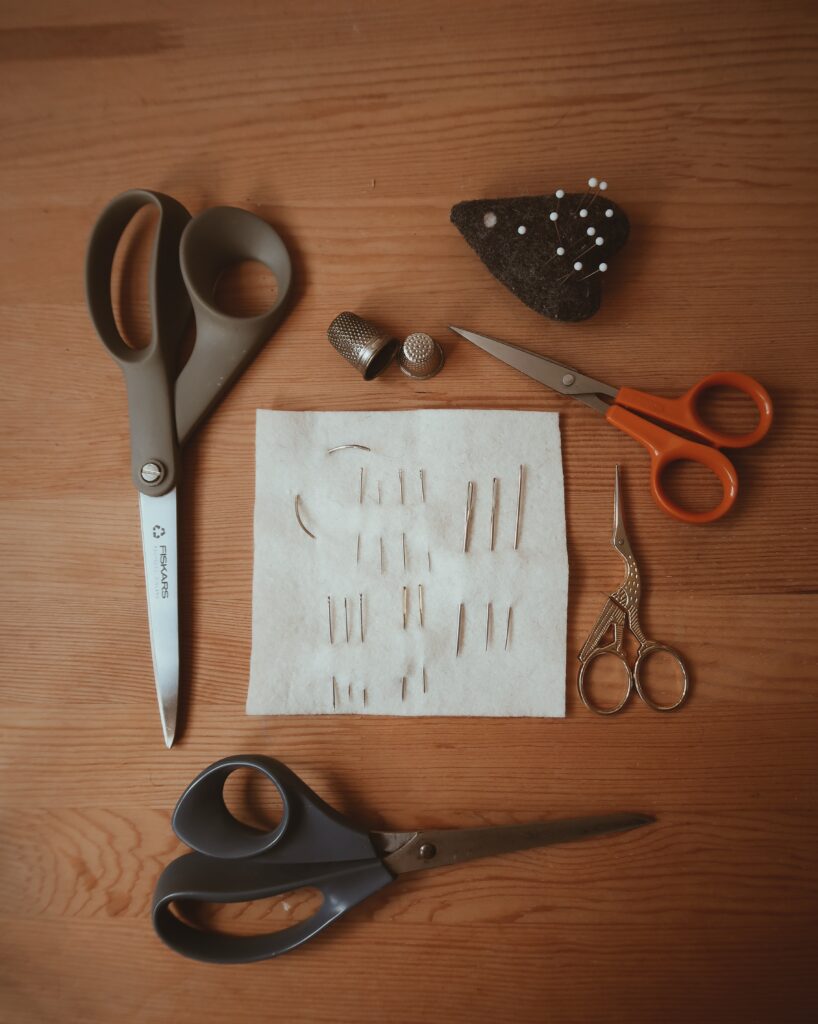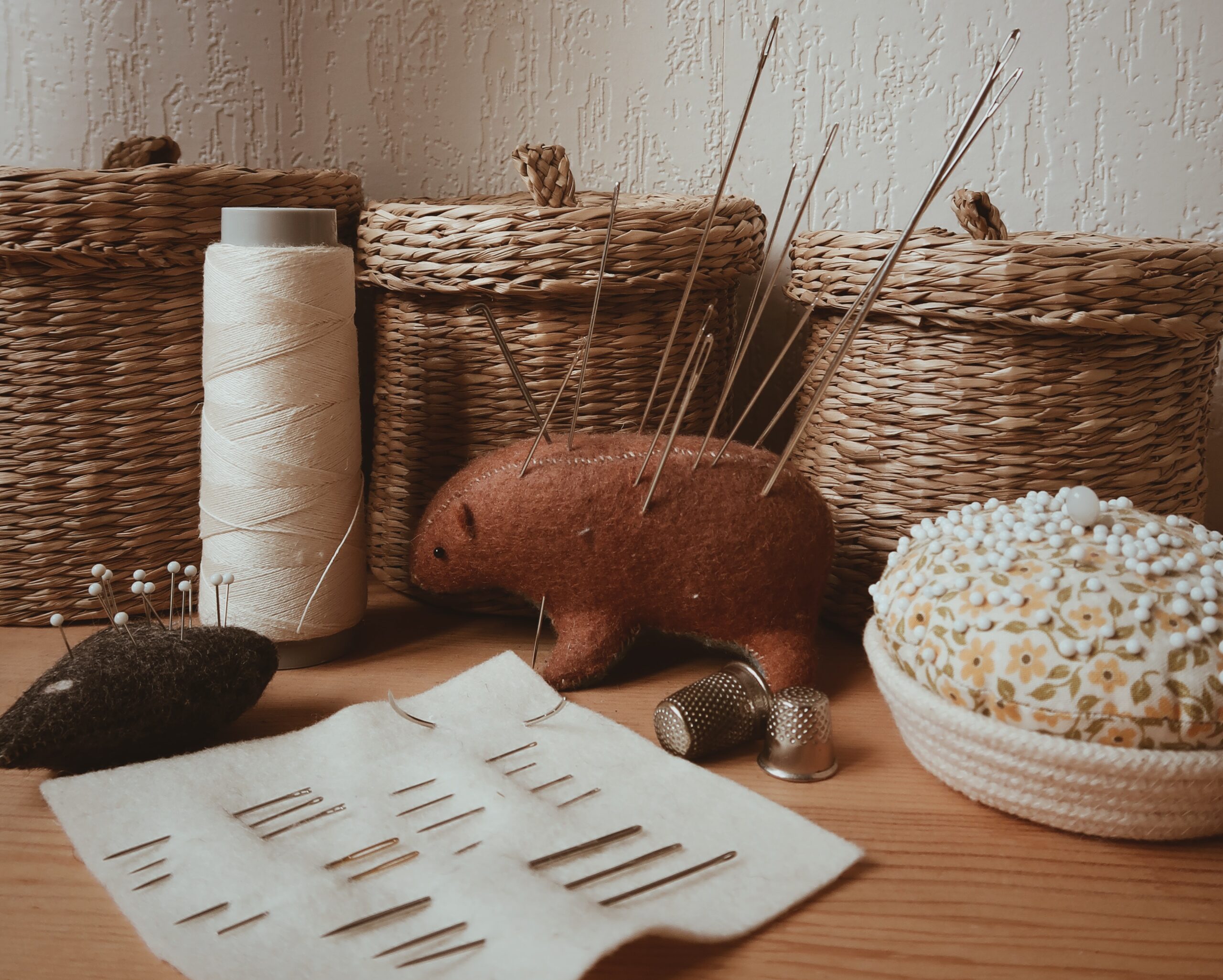Few tools are necessary for making teddy bears and those on the following list will probably already have a place in your home sewing box. However, before embarking on the adventure of creating your first teddy bear, it is well worth ensuring you have these essential items to hand. There will also be some slightly more specialised (but nonetheless easy to locate) items worth investing in for a truly professional finish. All the following items should be readily available from a local haberdashery shop or online. Try to look on each purchase as an investment and source good quality items where you can. Cheaper or poorly manufactured versions will cause nothing but frustration, turning each task into a chore rather than a pleasure.
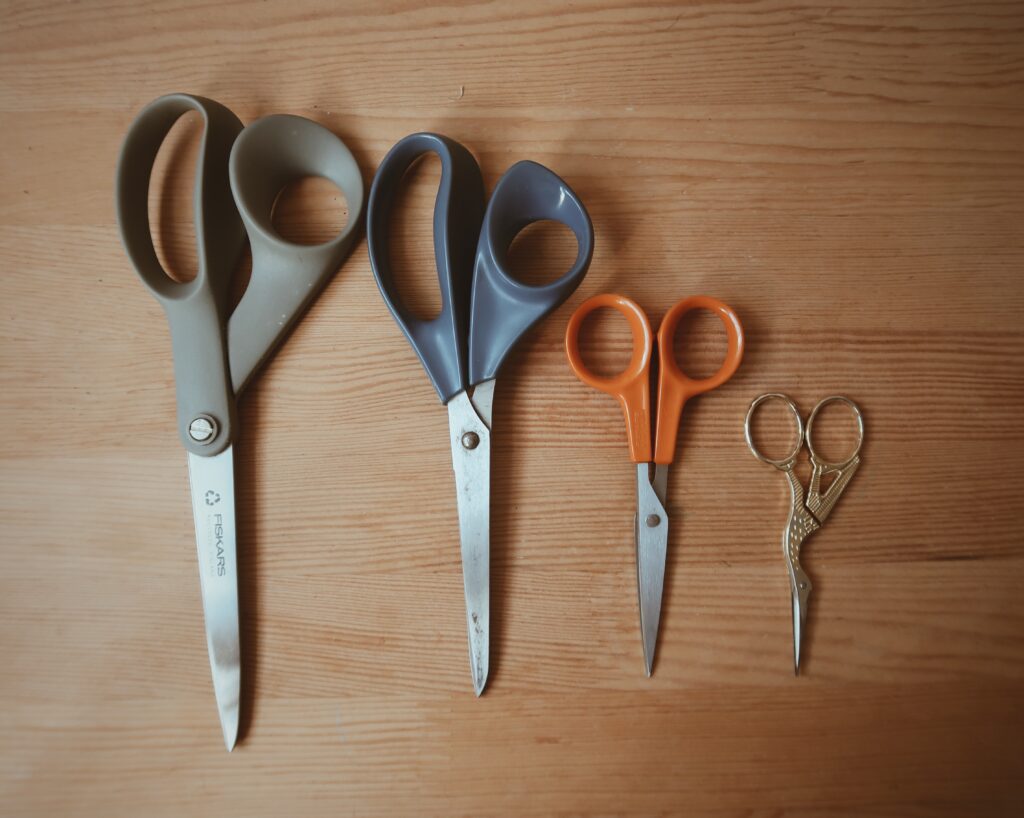
1. Scissors
Perhaps your most important tool are your scissors. There are three types of scissors generally required for bear making: craft scissors, fabric scissors and embroidery scissors.
Craft scissors: ordinary (and usually inexpensive) household scissors used to cut out paper tracings and card sewing patterns.
Fabric scissors: Fur fabric is not cut out in the same way as fabric for dressmaking. Therefore, avoid dressmaking shears otherwise you will end up with bald seams and strange cut edges on your seams. They should also have slim blades which cut well at the points because the tip of the scissors is used to both cut the fur fabric and trim the pile. The best type are good quality sewing scissors with sharp and pointed blades no longer than 5 inches/13cm in length. They must be sharp (and kept sharp) as mohair blunts scissors very quickly.
Embroidery scissors: A small pair of embroidery scissors are useful for cutting threads after sewing and also for trimming away the fur on a bear’s muzzle, around the eyes and the insides of ears. You can also use them to carefully trim the fur from the seams before stitching. They are also ideal for cutting out very small fabric pieces if you are making miniature teddy bears.
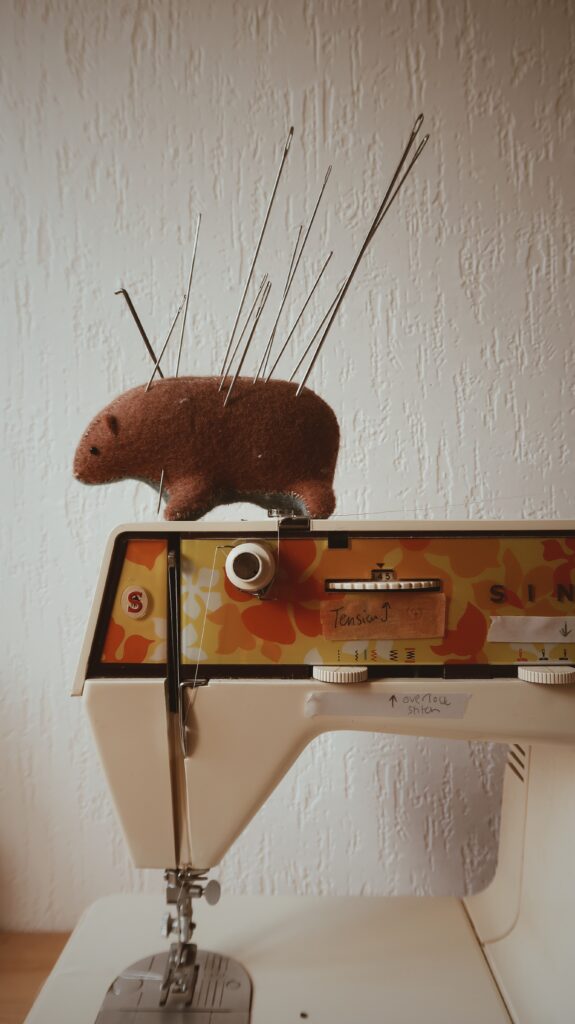
2. Needles
If you are sewing a bear by machine, for woven backed mohair and good quality fur fabrics, you will need a size 14 to 16 regular or sharp machine needle. Use a ballpoint if you are using a knitted (jersey) backed fabric.
Sewing needles of various length and type are needed for a variety of uses; seaming, embroidery, sculpting, attaching eyes and ears. For hand sewing, a pack of assorted ‘Sharps’ 3 to 7 needles will be useful for tacking, sewing in foot pads and backstitching. Choose ballpoint needles if your fabric so requires them.
- Fine milliner’s or quilter’s needles for tiny seams on miniature bears.
- Sharps for normal sized bear making.
- Embroidery crewel needles with a larger eye for thicker threads for embroidering noses and claws.
- Curved upholstery needles for attaching ears and closing seams with ladder stitch.
- For finishing seams and closing up a finished bear, a longer needle is better for making secured and neat final seams. A long, sharp darning needle 6mm length and size 5 or 7 is best.
- Extra-long doll making needle for fixing eyes, embroidering noses and also for closing the head opening of a large bear. Doll needles are available in a variety of lengths and thicknesses.
- Needle puller/pliers to help pull through needles in thicker fabrics/seams.
- A needle case is a useful addition to help store them safely and securely.
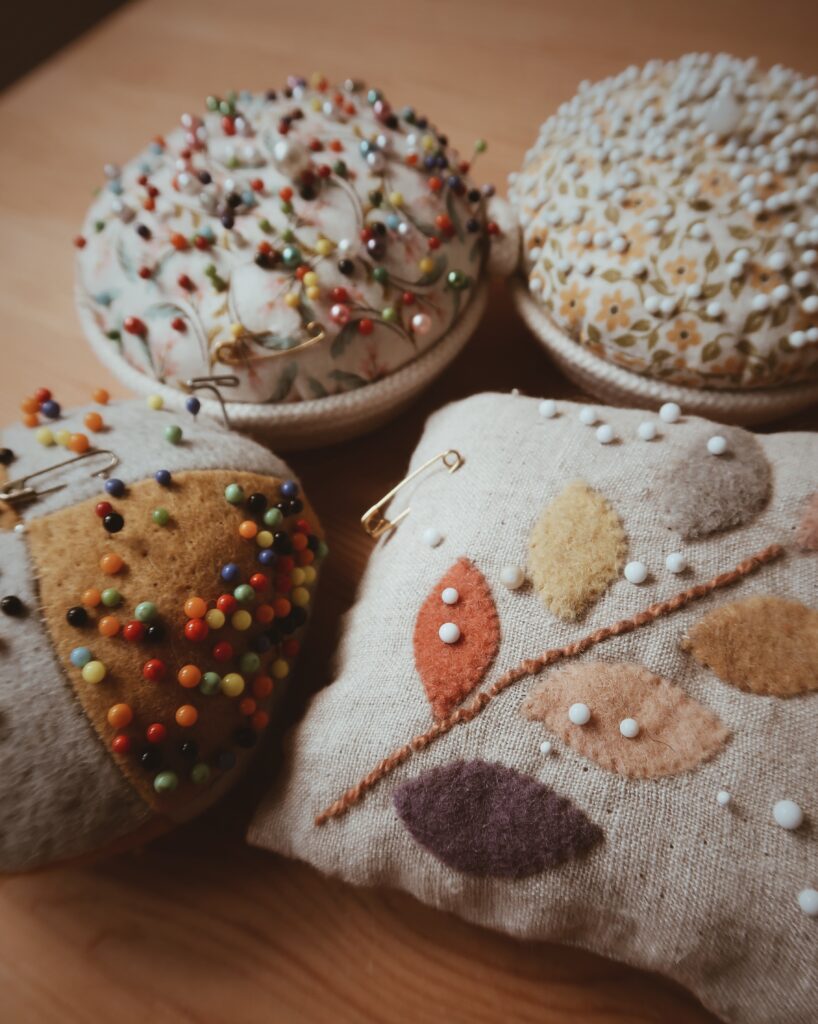
3. Pins
All teddy bear making requires the use of pins to position the various pieces securely before and during tacking and sewing.
Extra long, stout quilting pins are good for holding tough fabrics and keeping ears in place as they are sewn on. They should have coloured plastic or glass heads to allow for greater visibility in dense fur.
For more general sewing, choose coloured, large glass headed pins as they are more easily identified in long pile fabric.
Shorter glass headed appliqué pins are perfect for miniature work.
Wig or T pins used for macramé are useful for holding ears in place whilst stitching.
All pins should be kept securely in a pin cushion or on the wheel in which they are supplied and counted out and back into the container as you work to ensure no pins are left behind in the bear.
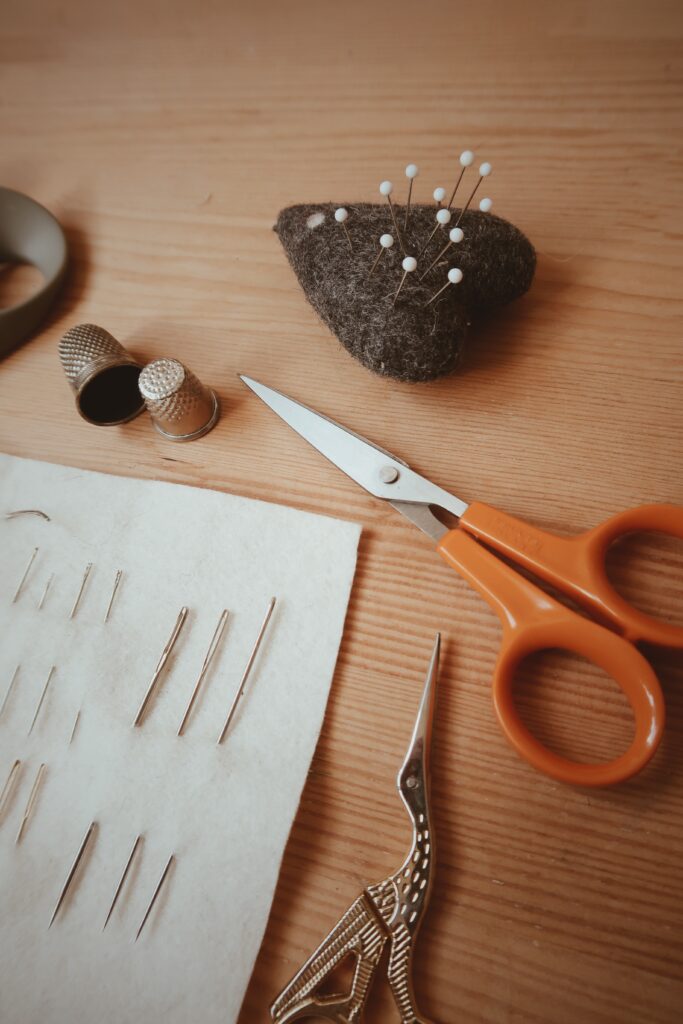
4. Thimble
When sewing by hand, you will find the needle can become difficult to pass through the thicker, bulkier parts of the seams. It’s a good idea to invest in a thimble, most especially a leather thimble which will not only cushion your finger when you have a lot of pinning/sewing of bulky seams but also allow you to wrap thread around your finger and pull tightly without the thread cutting your skin.
This list is an initial guide for somebody preparing themselves for the teddy bear making journey. It’s easy to be overwhelmed by such a list at first, or to assume that some of the items are an unnecessary luxury. However basic, but precise sewing materials are the founding elements of a bear maker’s tool kit. By investing in the correct scissors, needles and pins at the outset, you are investing in your future pleasure as a bear maker. It is often said that a bad craftsperson blames their tools. But if you have the right tools for the job, you are less likely of doing a bad job and any potential frustrations will be instead replaced with pleasure. Remember, you will be investing fairly large amounts on top quality materials and components from your very first bear so it would be a shame to spoil your teddies by using inferior tools and materials.
